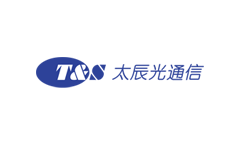What Are the Advantages of Direct Attach Cable Over Active Optical Cable?

In recent years, with the rapid development of data centers and increasing data transmission among manufacturers and users, the rates of optical transceivers have evolved from 25G and 40G to the current 100G, 200G, etc. Correspondingly, AOC has been developed to a new level.
Active Optical Cable (AOC) can be said to be a new type of transmission medium for high-density and high-bandwidth applications in the era of big data. Compared with traditional cables, active optical cables have high transmission rates, long transmission distances, low energy consumption and convenient way to use. Active optical cables benefit communication equipment with the huge advantages of optical transmission, and it is an ideal transmission cable for data centers, consumer electronics and other fields.
However, why can Direct Attach Cables still develop in the market when AOC has such huge advantages?
1. First, let's take a look at direct attach cable
Direct attach cable (DAC) is usually a fixed-length cable assembly with fixed connectors at both ends.
The connector used at the end of direct attach cable is the same as the interface of the optical transceivers, but compared to the optical transceiver, the connector module on the direct attach cable does not have expensive optical lasers and other electronic components, thus greatly saving the cost and power consumption in short-distance applications. As a low-cost and high-efficient high-speed data communication solution that replaces optical transceivers, it can be widely used in storage area networks, data centers, and high-performance computer connections by connecting switches to routers or servers.
2. Advantages of direct attach cable (DAC) over active optical cable
(1) In terms of transmission distance, direct attach cables have shorter transmission distances than active optical cables, so they are suitable for short-distance cabling in data centers.
(2) In terms of material, the direct attach cable is made of copper core inside. The copper cable is a natural radiator with good heat dissipation effect, which is energy saving and environmentally friendly.
(3) In terms of power consumption, direct attach cables have low power consumption.
3. The current rates and types of direct attach cable DAC
(1) 100G QSFP28 DAC direct attach cable
The 100G QSFP28 cable assembly is a high-performance and cost-effective I/O solution. Direct attach cable assemblies can meet and exceed the requirements for 100 Gigabit Ethernet, InfiniBand EDR as well as temperature requirements for performance and reliability. The cable complies with SFF-8436 specifications and provide connections between devices using QSFP ports.
(2) 100GE QSFP28 to 25G SFP28 DAC direct attach cable
QSFP28 4x25SFP28 cable is high-performance and cost-effective, which can realize the interconnection between SFP28 and QSFP28. The hybrid cable complies with SFF-8402 and SFF-8665 specifications. It can be applied to realize low-power and short-reach interconnection.
Each transmits data at a rate of 25Gb/s, providing an aggregate rate of 100gb/s.
(3) 25GE SFP28 DAC direct attach passive copper cable
SFP28 passive cable assembly is a high-performance and cost-effective I/O solution for connecting 25G Ethernet.
(4) 56G QSFP+ DAC copper cable
QSFP+ copper cable is compatible with SFF-8436. It can be applied to realize low-power and short-reach interconnection. Each transmits data up to 14Gb/s, providing an aggregation rate of 40gb/s.
- +1 Like
- Add to Favorites
Recommend
- What Is the Difference between 100G Active Optical Cable and 100G Direct Attach Cable?
- Solutions for 40G QSFP+DAC/AOC Direct Connection Cable
- What Is the Best Way to Attach Wires to a PCB?
- Does a Passive Crystal Oscillator Have a Direction?
- Miniaturized Low-Loss U.FL and MHF Pigtail Cable Assembly Enables Low-loss RF Signal Transmission for Cables Inside Devices
- Cable Industry Innovates: ZTT Leads in Building a Smart Digital Network Ecosystem
- Leoni Develops The Worldwide First SPE Cables for Drag Chain and Torsion Applications
- What Are the Components of Internet of Things?
This document is provided by Sekorm Platform for VIP exclusive service. The copyright is owned by Sekorm. Without authorization, any medias, websites or individual are not allowed to reprint. When authorizing the reprint, the link of www.sekorm.com must be indicated.





























































































































































































































































































































































































































































































































































































































































































































































































































































































